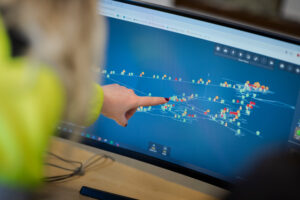In all activities for the development of a smart city, access to reliable and up-to-date information is a critical commodity.
All parties involved in building a smart city require access to different types of information that support the planning, construction, and maintenance processes. These can be things like traffic density data, pollution levels at intersections, energy use profiles in buildings, and temperature in public areas. This kind of geo-located data is essential for informed analysis and decision-making.
Cities have the potential to transform data into a powerful tool for achieving sustainability goals. However, the availability of such data is not always clear. Fragmented and outdated data, lack of shared frameworks (interoperability), and lack of key performance indicators (KPIs) pose a significant challenge.

Image by Fredric Alm/ Imagebank.sweden.se
Successful utilization of geo-based information is only possible if everyone has access to the same reliable, up-to-date, and authoritative data. This ensures that stakeholders across all levels can make informed, evidence-based decisions.
For this reason, robust data governance and standardized data management are essential. Developing these frameworks should be a priority to guarantee consistency, transparency, and interoperability. A centralized technical infrastructure, such as a common access point, is necessary to make data easily accessible and usable. In addition, establishing cross-sector KPIs, secure open-data practices, and coordinated efforts through central authorities is crucial.
All these measures work to enable more efficient planning and monitoring, as well as foster a vital collaboration between public and private sectors.